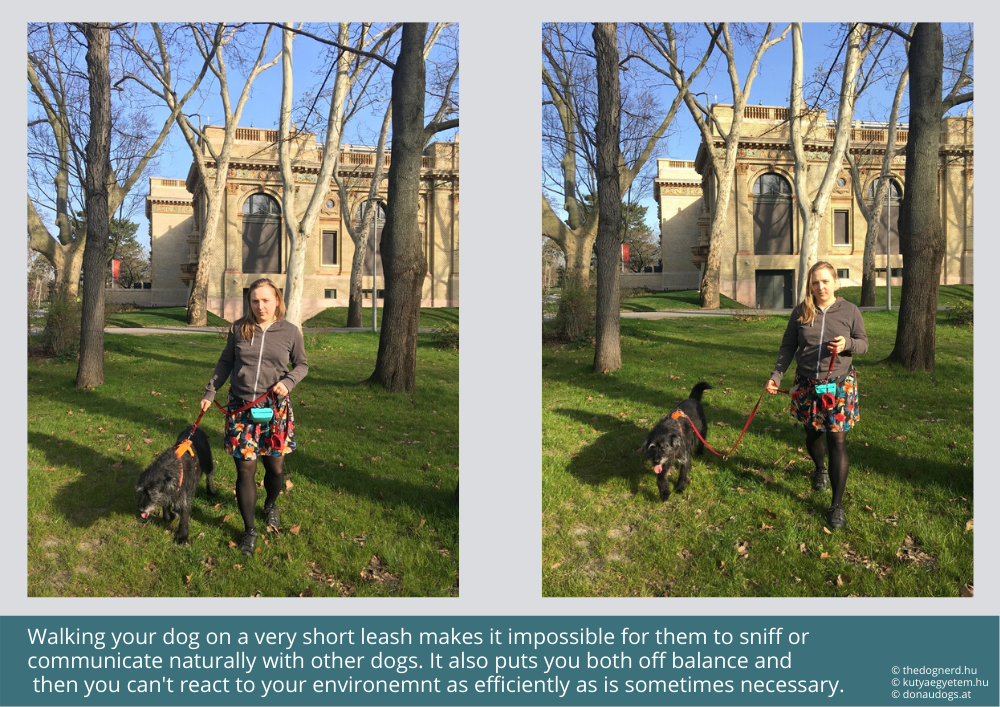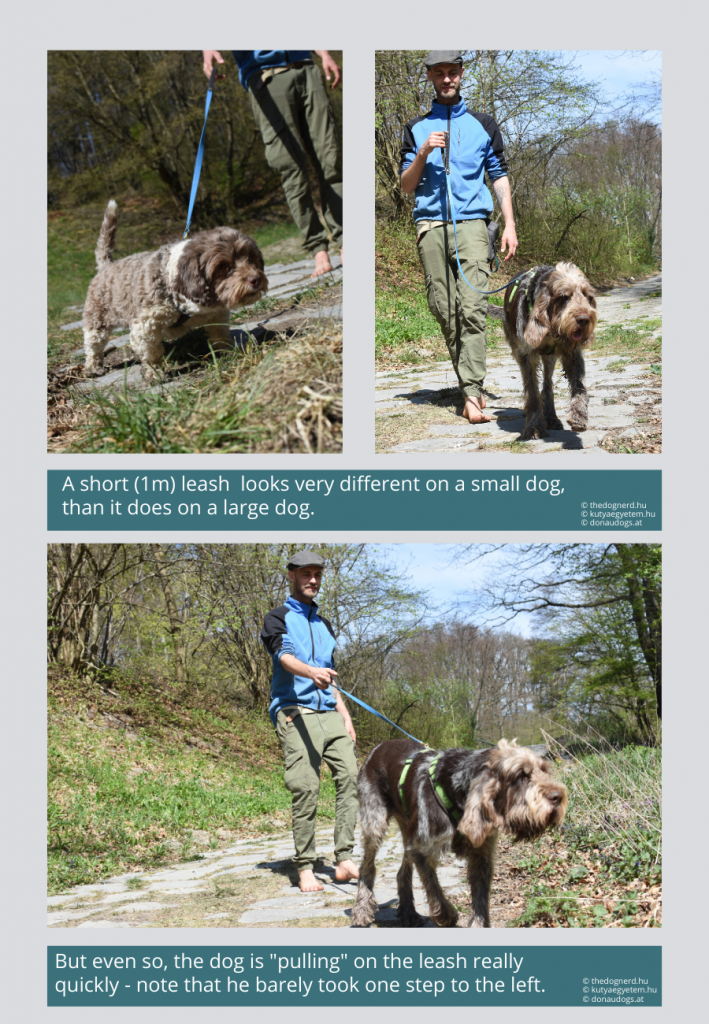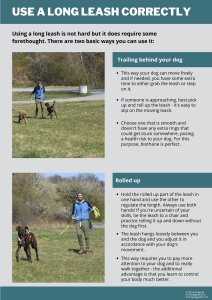Intro
Leash might be a piece of equipment you’ve never given much thought to, but believe me, they were not all created equal. This post will help you choose the most appropriate leash for you and your dog based on your activities and needs.
The main leash types you’ll encounter are:
-
- short leashes (below 1.5 meters)
- normal leashes (1.5-3 meters)
- retractable leashes (usually 5 meters)
- long leashes (5m and longer)
Characteristics
There are so many types of leashes on the market, that you can really choose your favourite. Apart from the length, pay attention to the following:
-
- material: biothane, nylon, leather
- smoothness: if you’re planning to let the leash trail behind your dog, choose a leash that has no rings and crooks, so that it cannot get stuck anywhere
- adjustability: most 2-3m leashes can be adjusted in length, which makes them perfect for the city
- handle: again, you don’t need a handle if the leash is trailing behind your dog but if your dog is reactive you need a handle that you can firmly grip
- reaction to water: biothane leashes don’t absorb water and are super easy to clean, but they get extremely slippery. You can keep hold of leather and nylon easily even if they’re wet, but they will get heavy. Leather leashes become damaged if they’re exposed to water too much.
Choose an appropriate length
Short leashes (below 1.5m): usually not appropriate
This length is not appropriate for walking your dog. If you have a small dog, chances are your dog is “pulling” constantly because there is barely 1m between its neck and your hand and in this setting the leash can’t be loose. And even if you have a large dog, they can hardly sniff at that length.
However, short leashes work great at home when you need some extra security while your dog is still in training – for example if your puppy is not toilet trained yet and you need to keep an eye on them.
Normal leashes (1.5-3m): a great choice for city life
If you live in the city and commute a lot with your dog, an adjustable 2-3m long leash is a good choice. 2-3 meters give enough freedom to sniff and move comfortably next to each other on emptier streets, and you can shorten it to about 1-1.5m if the street is really busy or if you’re getting on a bus etc. Just remember that you need to teach your dog to move closer to you when the leash gets shorter.
Once you’re in the park, it’s good to swap it for a 5m+ leash (or teach your dog reliable recall).
Long leashes (usually 5-15m): good for training and walks
Long leashes are really useful when you want to give your dog more freedom to move but they need to stay secured on the leash:
-
- on walks (if they can’t be off leash)
- for scent work/mantrailing
- during training
- during the wildlife breeding season
- if your dog is in heat
Retractable leashes: mostly not worth it
Upfront: theoretically, things themselves are not good or bad, it’s the way we use them. But when it comes to retractable leashes in many cases the amount of work necessary to use them correctly is often just not worth it.
Let me start with the disadvantages:
-
- the handle is pretty heavy and the sound it makes if it falls can be startling to many dogs, the sound the handle makes when you un/block it can also be scary,
- they tend to make us feel like we don’t need to pay attention to our dogs, which in result makes recognizing difficult situations in time difficult,
- you can’t grab the cord with both hands, which can be dangerous if you have a large dog,
- other people in the park never know what length your leash is, which makes it harder to avoid an encounter.
However, sometimes a retractable leash is the optimal choice. One advantage is that you don’t need two hands to use it (as opposed to a long leash), which may work better for someone with a disability.
If you do decide to use a retractable leash, please remember:
-
- if your dog uses the full 5m, always use it with a harness (5m allows the dog to gather a lot of momentum!)
- learn how to block and unblock it before you put it on your dog
- for training fans: condition the clicking noise it makes as an attention cue, this way your dog won’t be jerked around and won’t get spooked
- train a good recall, so that you don’t have to “angle” your dog back by locking and unlocking the stop mechanism
A note on retriever leashes
Retriever leashes, also known as moxxon leashes are not made for recreational use. They were created for hunters, who often have to unleash their dogs quickly and their dogs need to go “naked”, in order to avoid getting stuck somewhere in the bush and injured. Plus, if you take a closer look, they are really choke collars.
Don’t miss any new posts, follow The Dog Nerd on facebook!
Check out my other equipment posts
How to choose the right collar for your dog
How to choose the perfect harness for your dog
How to choose the perfect muzzle for your dog
Help, my dog pulls on the leash!
These posts were created in collaboration with Donau Dogs.



